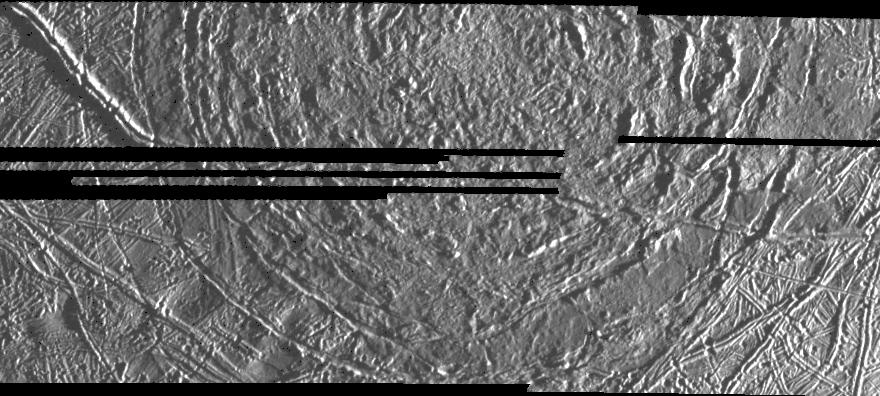All Resources
Macula on Europa

This image of Europa, an icy satellite of Jupiter about the size of the Earth's Moon, was obtained from a range of 7,415 miles (11,933 kilometers) by the Galileo spacecraft during its fourth orbit around Jupiter and its first close pass of Europa. The image spans 30 miles by 57 miles (48 km by 91 km) and shows features as small as 800 feet (240 meters) across. The large circular feature centered in the upper middle of the image is called a macula, and could be the scar of a large meteorite impact. The surface of Europa is composed mostly of water ice, so large impact craters on Europa could look different from large bowl-shaped depressions formed by impact into rock, such as on the Moon. On Europa's icy surface, the original impact crater has been modified into a central zone of rugged topography surrounded by circular fractures which reflect adjustments to stress in the surrounding icy crust.


